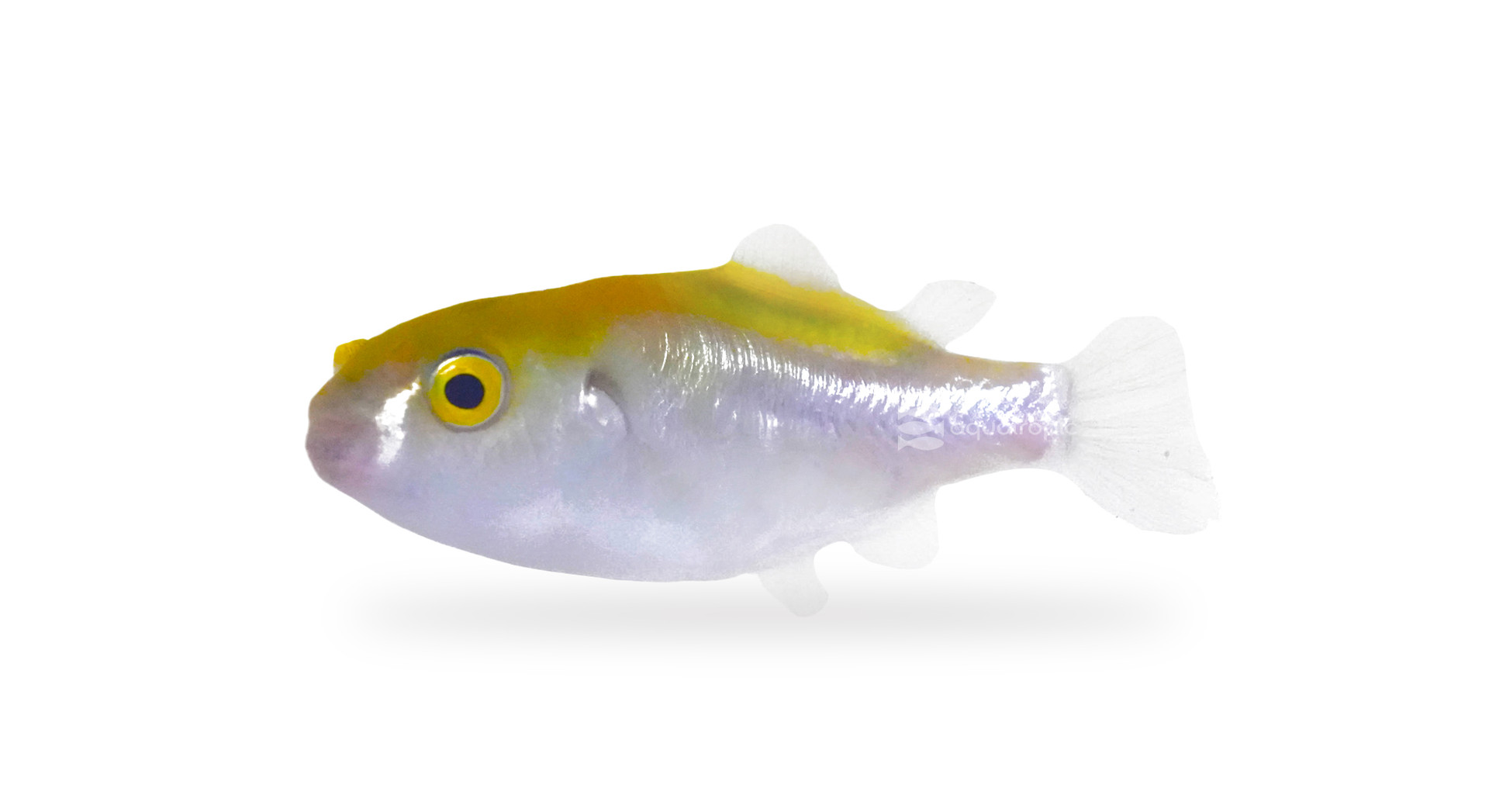The Golden Globes

Bronze Pufferfish are unique in many ways. Coloration wise, these fish have a metallic sheen uncommon among Puffers, because of this, they are often called Golden Puffers. Their coloration can also have greenish shades, and this has also led to them being called Avocado Puffers, in our opinion, this is the least appropriate name for the majority of them. This shiny metallic coloration is most prominent along their dorsal area (back) and fades to a silvery white on their belly. The fins and tails of all of these color variants are usually pale, white or even translucent.
Not much is known about the wild reproduction of Bronze Puffers and as a result, they are all wild collected. They are found in moving currents, generally rivers, throughout their natural range in Southeast Asia, Indonesia and Malaysia. These Pufferfish are also found in flood estuaries, one of the few places they are collected where there isn't substantial current and oxygenation. Their general body shape (unless puffed up) is much sleeker and more streamlined than pretty much any other puffer and as a result they are adept swimmers. This body shape makes sense based on their natural habitat and is another of their features that is unique.
Their scientific name is Auriglobus modestus; Auriglobus basically translates as Golden Globe and this makes sense, but the modestus part translates from Latin as modest, calm, restrained or mild. There is nothing modest about this fish in appearance and temperament wise, they run a wide gamut.
This temperament differential is very interesting and completely individual. Many Bronze Puffers are perfectly happy kept in groups and even with other fish. On the other end of the spectrum, some fish are singularly nasty little buggers; they will harass and torment anything you try to home with them, taking vicious bites of any tankmate you attempt. They'll bite and eat fins, scales even chunks of other fish. If the individual fish you have falls into this category, you'll have no choice but to keep it by itself. There's no good way to predict which you'll get. If you are trying to keep multiples, or keep them with other fish, we suggest only buying them as a group together. We further suggest that if you are planning on keeping them with other species that you choose species that are fast, strong swimmers like Danios or large Barbs. Even if you have a “peaceful” puffer, you should never attempt to keep them with very passive or slow moving tankmates.
Feeding the Bronze Pufferfish is very easy. They will greedily accept most common aquarium foods. They love mysis, appropriately sized worms both live and thawed, krill, and other small sized chopped fish. In the wild, the diet of Auriglobus modestus is primarily invertebrates (and some seeds, oddly enough), and this will be true in your aquarium as well. They will consume snails, shrimp, even crayfish and bivalves. In fact, they should be offered some shelled invertebrates as a regular part of their diet, as this will round out their nutritional profile and give them something to help wear down their ever-growing teeth. These teeth can become a problem, so feeding them shelled foods regularly is important if you wish to avoid having to clip their teeth. They love the challenge of Gamma's Cockle in Shell, something we offer to the larger specimens here in house in addition to their normal diet. We've found them to readily accept pellet foods as well, if you're interested in supplementing their diet this way, choose an appropriately sized sinking pellet from Nutramar, as ingesting air with their food can be detrimental to puffers.
Aquariums for Bronze Puffers don't have to be overly large as they stay pretty small, rarely getting bigger than four or five inches long. Aquariums for single specimens could be as small as 20 gallons, though 40 gallons would give them more room to explore. To mimic their wild habitat, a good amount of current would be appropriate, and because they are messy eaters, we also recommend strong filtration. These two ideas are obviously tied together; look for filtration that will turn over the entire amount of water in the display at least 10 times per hour; high output canister filtration is an excellent choice. Most Pufferfish are somewhat intolerant of ammonia, nitrite and nitrate, and as such, you should expect to do consistent water changes.
They are curious seeming fish and will explore and root around all the corners of a display. They will appreciate a display that is densely aquascaped, and do well in planted aquariums where the plants are not easily uprooted. We suggest sand (or other soft) substrates and aquarists should also utilize interesting rockwork and or driftwood to add exploration opportunities and hiding places for their fish. Surface plants are an option to help keep lighting in the subdued range that these puffers seem to prefer. Densely packed aquariums are also something we recommend if you're planning on keeping multiple Bronze Puffers or attempting to keep them with other fish.
Bronze Pufferfish are staff favorites here, and for many good reasons. They are true freshwater puffers and will not need to be moved into brackish environments when they get older. They are excellent swimmers that are curious and engaging pets. They are fun to watch and feed and sure to be a conversation starter with everyone who sees your aquarium. Their small adult size and omnivorous diet makes them ideal for the home aquarium. If this all sounds interesting to you, hit your Local Fish Store and ask them about sustainably harvested Bronze Puffers today!